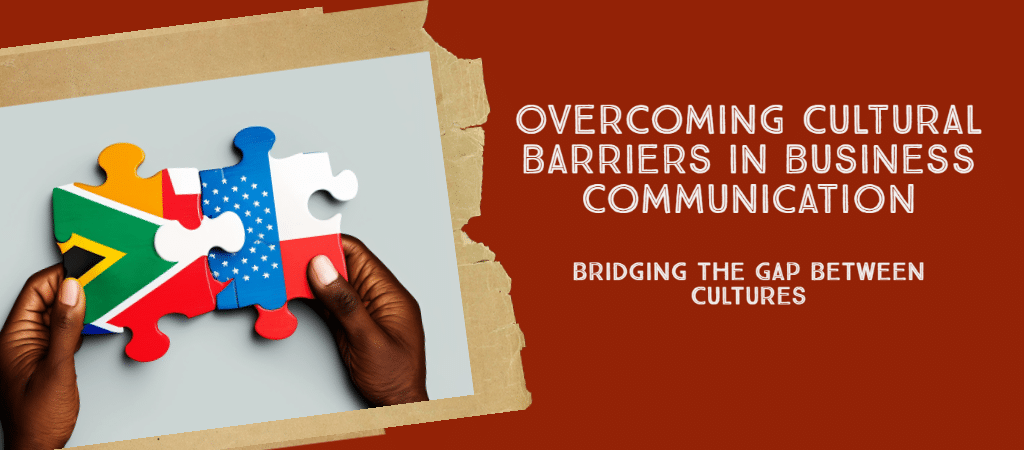
The World Awaits Your Message
In today’s globalized business environment, international business communication has become more critical than ever. As companies extend their reach across borders, the need to effectively communicate with diverse audiences is paramount. With cultural, linguistic, and technological barriers to overcome, mastering the art of international business communication can be challenging. But worry not! In this fun and friendly guide, we will explore techniques to help you navigate the exciting world of cross-cultural communication and forge successful business relationships. Let’s dive in!
Table of Contents:
- Overcoming Cultural Barriers: Embracing Differences
- Diverse Audience Strategies: Know Your Crowd
- Communication Problems in International Business: Identifying and Solving
- Effective Communication Techniques: Tools of the Trade
- Adapting Communication Strategies: Staying Flexible
- Remote Work Communication: Bridging the Distance
- 5-Step Framework for Business Communication: A Roadmap to Success
- The Role of Technology in Business Communication: The Future is Now
- Global Communication Trends: Staying Ahead of the Curve
- Overcoming Cultural Barriers: Embracing Differences

Overcoming Cultural Barriers
Culture is a significant factor in international business communication, as it influences how people perceive and interpret messages. To overcome cultural barriers, start by:
- Educating yourself about the cultures of your business partners.
- Being aware of different communication styles, such as direct or indirect speech.
- Avoiding cultural stereotypes and showing genuine interest in understanding others’ perspectives.
- Practicing active listening to show empathy and build rapport.
Real-world example: IKEA, the Swedish furniture giant, attributes its success in part to understanding and adapting to local cultures in its global markets. By embracing cultural differences, the company has managed to create a strong international presence.
Diverse Audience Strategies: Know Your Crowd
Tailoring your communication to suit the specific needs of your audience is essential. Consider these strategies when dealing with a diverse audience:
- Identify the demographics, preferences, and expectations of your audience.
- Use clear, concise language, avoiding jargon or overly technical terms.
- Employ visual aids to support your message and cater to different learning styles.
- Adapt your tone and style to suit the audience’s cultural background and preferences.
Communication Problems in International Business: Identifying and Solving
Miscommunication can hinder international business success. To identify and resolve communication problems:
- Be mindful of language barriers and invest in translation services if needed.
- Encourage open dialogue and establish channels for feedback.
- Promote cultural sensitivity training for your team.
- Foster a growth mindset, encouraging team members to learn from mistakes and improve communication skills.

Effective Communication Techniques: Tools of the Trade
Effective communication is the backbone of international business success. Some essential techniques include:
- Active listening: Demonstrate empathy and attentiveness by focusing on the speaker, asking clarifying questions, and providing feedback.
- Nonverbal communication: Pay attention to body language, tone of voice, and facial expressions to better understand your counterparts.
- Storytelling: Use anecdotes and personal experiences to make your message more relatable and engaging.
Expert opinion: “The most important thing in communication is hearing what isn’t said.” – Peter Drucker, renowned management consultant.
Adapting Communication Strategies: Staying Flexible
In international business, adaptability is crucial. To stay flexible in your communication strategies:
- Continuously assess your audience’s needs and preferences, making adjustments as needed.
- Learn from past experiences and apply lessons to future interactions.
- Stay open to new ideas and be willing to experiment with different communication methods.
Remote Work Communication: Bridging the Distance
As remote work becomes increasingly common, maintaining effective communication across time zones and virtual platforms is essential. Here are some tips to help bridge the distance:
- Leverage technology: Utilize video conferencing, instant messaging, and project management tools to streamline communication and collaboration.
- Establish clear communication guidelines: Set expectations for response times, meeting attendance, and information-sharing to ensure everyone is on the same page.
- Schedule regular check-ins: Regular virtual meetings can help maintain team cohesion and provide opportunities for feedback and updates.
- Cultivate a supportive remote work culture: Encourage team members to share ideas, ask questions, and support one another.
5-Step Framework for Business Communication: A Roadmap to Success
To effectively communicate in international business, follow this 5-step framework:
- Identify and profile the audience: Understand their cultural, linguistic, and professional backgrounds.
- Define a purpose for the communication: Establish clear objectives and the desired response from your audience.
- Identify the information needed to support the purpose: Ensure your message is accurate, timely, relevant, and credible.
- Determine what motives will drive the audience to listen and support the position: Customize your message and benefits for each audience.
- Imagine additional factors that could impact the intended result: Consider unforeseen events and circumstances that may influence communication goals, and prepare appropriate responses.
- The Role of Technology in Business Communication: The Future is Now
Advancements in technology have transformed the landscape of international business communication. Some noteworthy trends include:
- Artificial Intelligence (AI): AI-powered chatbots and virtual assistants help streamline customer service and internal communication processes.
- Machine translation: Translation software, such as Google Translate, allows for real-time translation, facilitating cross-cultural communication.
- Collaboration tools: Platforms like Slack, Microsoft Teams, and Trello enable efficient communication and collaboration among remote and dispersed teams.
Business communication case study: Global software company, Atlassian, has successfully harnessed technology to support their remote work culture, using various communication tools to connect their employees across continents and time zones.
Global Communication Trends: Staying Ahead of the Curve
To stay competitive in the ever-evolving world of international business communication, keep an eye on these emerging trends:
- Increased emphasis on diversity, equity, and inclusion (DEI): Companies are prioritizing DEI initiatives to create more inclusive work environments and cater to diverse audiences.
- The rise of remote work: The COVID-19 pandemic has accelerated the adoption of remote work, making effective communication in virtual settings more important than ever.
- The growing importance of corporate social responsibility (CSR): Consumers and employees alike are paying closer attention to companies’ social and environmental impact, making transparent and authentic communication essential.
24 Hour Translation Services: Your Partner in Mastering International Business Communication
“24 Hour Translation Services: Your Partner in Mastering International Business Communication
As you strive to perfect your international business communication skills, having a reliable partner can make all the difference. 24 Hour Translation Services is a professional translation agency committed to helping you overcome language barriers and enhance cross-cultural communication.
With a team of skilled and experienced translators, 24 Hour Translation Services offers a wide range of services, including document translation, localization, and interpretation. By working with native speakers who understand the nuances of both the source and target languages, the agency ensures the highest quality translations for your business needs.
In this article, we’ve explored various techniques and strategies for effective international business communication. By partnering with 24 Hour Translation Services, you can further boost your communication skills, ensuring that your message reaches diverse audiences with clarity and precision.
To learn more about how 24 Hour Translation Services can help you conquer the world of international business communication, click here and explore the wide array of translation services available to support your global endeavors.”
Conclusion
In conclusion, mastering international business communication is a vital skill in today’s interconnected world. By overcoming cultural barriers, adapting to diverse audiences, leveraging technology, and staying abreast of emerging trends, you can foster successful business relationships across the globe. So go forth and conquer the world with your newfound communication prowess!
Frequently Asked Questions
Some best practices for cross-cultural communication include educating yourself about different cultures, avoiding stereotypes, practicing active listening, and being aware of various communication styles.
To improve your business communication skills, identify your audience’s preferences, use clear and concise language, employ visual aids, and adapt your tone and style to suit their cultural background.
Effective intercultural communication strategies include embracing cultural differences, tailoring your communication to suit diverse audiences, promoting cultural sensitivity training, and fostering a growth mindset within your team.
Building a successful multicultural team requires understanding cultural nuances, encouraging open dialogue, promoting cultural sensitivity, and fostering a supportive and inclusive work environment.
Communication challenges in global business include overcoming cultural and language barriers, navigating different communication styles, managing virtual team communication, and adapting to changing global trends.
Managing virtual team communication across time zones involves leveraging technology, establishing clear communication guidelines, scheduling regular check-ins, and cultivating a supportive remote work culture.
International negotiation techniques include active listening, understanding cultural nuances, employing storytelling, and adapting
To create a winning global business strategy, understand your target markets, embrace cultural differences, adapt your products and services to local preferences, and leverage technology to enhance communication and collaboration.
Enhancing your cultural intelligence involves educating yourself about different cultures, practicing empathy, engaging in active listening, and being open to new perspectives and ideas.
Solutions for overcoming language barriers include investing in professional translation services, using machine translation tools, learning key phrases in different languages, and encouraging language learning among your team members.
Developing effective virtual team communication strategies involves leveraging technology, setting clear expectations, maintaining regular communication, and fostering a collaborative and supportive remote work culture.
Cultural intelligence helps you understand and adapt to different communication styles, avoid cultural misunderstandings, and build strong relationships with diverse business partners.
Technology supports multicultural team collaboration by providing tools for real-time translation, video conferencing, instant messaging, and project management, helping bridge language and time zone barriers.
Staying ahead of global communication trends involves keeping an eye on emerging technologies, prioritizing diversity and inclusion initiatives, and adapting to the evolving remote work landscape.
Professional translation services help overcome language barriers, ensure accurate and high-quality translations, enhance cross-cultural communication, and contribute to the success of your global
1. Identify and profile the audience, considering their cultural, linguistic, and professional backgrounds.
2. Define a clear purpose for the communication and determine the desired response from your audience.
3. Identify the information needed to support the purpose, ensuring your message is accurate, timely, relevant, and credible. 4. Determine what motives will drive the audience to listen and support your position, customizing your message and benefits for each audience.
5. Consider additional factors that could impact the intended result, preparing appropriate responses for unforeseen events and circumstances that may influence your communication goals.
